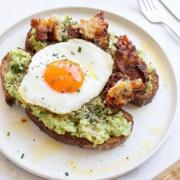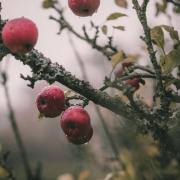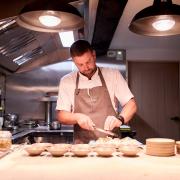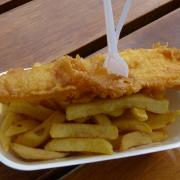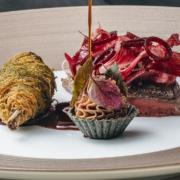James returns home on a break from filming to his pregnant wife and sourdough culture
A Sustainable Life withJames Strawbridge James returns home on a break from filming to his pregnant wife and sourdough culture photographs by NICK POPEThis month I am on paternity leave from the Hungry Sailors and have returned from the high seas for some quality family time. There are still jobs that need attention and I am also finishing off the photography for my next set of Made at Home cookbooks. I have seen huge strips of gorgeous coastline on my travels, but there’s no place like home. Make your own sourdough starter Being away from home for so long with a heavily pregnant wife waiting for my return was the hardest part of my filming job this year. I was glad to get home to Holly of course, but also glad to return to look at the sourdough culture that I bake with – not exactly the way to win brownie points! Making your own sourdough starter isn’t rocket science. In fact, making bread with natural yeasts is thousands of years old and surprisingly easy. To make your own sourdough you will need an area to store the culture that is within 28˚C-30˚C. Mix flour and water into a paste, place a lid over it or cover with plastic wrap. After 12-24 hours sprinkle in more fresh flour and water and return it to a warm place. The next day you will hopefully find that the starter has begun to change. It should show signs of frothing with small bubbles covering the surface. It may take a few days or weeks for it to develop a distinctive flavour, but for now it should smell acidic like rotten apples or sweet fruit. Often it will separate while maturing. If you see a grey liquid on the surface, simply whisk it in to the rest the next time you refresh the mixture. Continue adding more flour and water each day until the sourdough is ready to use – a ripe one will be active and full of little bubbles. Sourdough loafIngredients 150 g starter (from above) 500 g strong white flour 200 g water 10 g saltMethod 1 Mix together the starter in a bowl with strong white flour and water. Cover and leave to refresh for 3-4 hours. 2 Knead the dough for ten minutes until elastic, place in a bowl and leave to rest for one hour. 3 Gently fold the dough in on itself. Shape into a ball and then place it seam side up in a floured bowl with the seam facing upwards. Cover the dough with plastic and leave to prove for 3-4 hours. 4 Transfer the dough carefully from the bowl onto an oiled tray. Slash the top of the loaf and bake at 220˚C/425˚F/Gas Mark 7 for 10 minutes, followed by a further 35 minutes at 200˚C/400˚F/Gas Mark 6. Made at Home cookery Recently I have enlisted the help of local chef Brett Camborne-Paynter to assist with a culinary project. Having worked at nearby Austells in Carlyon Bay and the Hotel Cornwall, my family and I have enjoyed his cooking numerous times and it was great working with him on another Cornish project. My Made at Home books use local ingredients, contain traditional methods and present simple recipes, similar to the style of local chefs. ‘Made at home’ seems to be a term that can cover a wide range of Cornish cookery from pasties to saffron buns, and all of us in the industry get to shop in an area surrounded by the best in British produce.DIY smoked mackerel The sea is a funny place - when you are at sea you want to be at home and when you’re home a part of you wants to be back out at sea. I am lucky enough to live half a mile from the coast so the pull of the waves is never far away.When I catch mackerel, my favourite way to eat them is hot smoked and then turned into p�t�. Hot smoking is a sure way to infuse the aromatic into the fish. This helps to preserve the fish and also cooks them. Generally, I like to allow smoked fish to cool and eat it a day later. Ingredients 4 mackerel 110g tea leaves (Earl Grey or Jasmine) 250g short grain rice 2tbsp sugar1 Remove the fillets by cutting in behind the gills, towards the spine and then in a smooth cut, follow the line of bones across the length of it towards the tail. Before you reach the tail, bring the knife up to separate the fillet, then flip over the fish and repeat on the other side. 2 Smoke the mackerel fillets in a stove top smoker filled with tea, rice and sugar for 10-15 minutes. Position them so you can see the flesh with the skin away from you - the colour will serve as an indicator of how smoky they will taste. Cook for five minutes on a high heat and a further ten minutes on a low heat to enjoy your own delicious hot smoked fish! A Sustainable Life withJames Strawbridge
James returns home on a break from filming to his pregnant wife and sourdough culture
This month I am on paternity leave from the Hungry Sailors and have returned from the high seas for some quality family time. There are still jobs that need attention and I am also finishing off the photography for my next set of Made at Home cookbooks. I have seen huge strips of gorgeous coastline on my travels, but there’s no place like home. Make your own sourdough starter Being away from home for so long with a heavily pregnant wife waiting for my return was the hardest part of my filming job this year. I was glad to get home to Holly of course, but also glad to return to look at the sourdough culture that I bake with – not exactly the way to win brownie points! Making your own sourdough starter isn’t rocket science. In fact, making bread with natural yeasts is thousands of years old and surprisingly easy. To make your own sourdough you will need an area to store the culture that is within 28˚C-30˚C. Mix flour and water into a paste, place a lid over it or cover with plastic wrap. After 12-24 hours sprinkle in more fresh flour and water and return it to a warm place. The next day you will hopefully find that the starter has begun to change. It should show signs of frothing with small bubbles covering the surface. It may take a few days or weeks for it to develop a distinctive flavour, but for now it should smell acidic like rotten apples or sweet fruit.
“The sea is a funny place - when you are at sea you want to be at home and when you’re home a part of you wants to be back out at sea.”
Often it will separate while maturing. If you see a grey liquid on the surface, simply whisk it in to the rest the next time you refresh the mixture. Continue adding more flour and water each day until the sourdough is ready to use – a ripe one will be active and full of little bubbles.
Sourdough loaf
Ingredients
150 g starter (from above)500 g strong white flour 200 g water 10 g salt
Method
1 Mix together the starter in a bowl with strong white flour and water. Cover and leave to refresh for 3-4 hours. 2 Knead the dough for ten minutes until elastic, place in a bowl and leave to rest for one hour. 3 Gently fold the dough in on itself. Shape into a ball and then place it seam side up in a floured bowl with the seam facing upwards. Cover the dough with plastic and leave to prove for 3-4 hours. 4 Transfer the dough carefully from the bowl onto an oiled tray. Slash the top of the loaf and bake at 220˚C/425˚F/Gas Mark 7 for 10 minutes, followed by a further 35 minutes at 200˚C/400˚F/Gas Mark 6.
Made at Home cookery
Recently I have enlisted the help of local chef Brett Camborne-Paynter to assist with a culinary project. Having worked at nearby Austells in Carlyon Bay and the Hotel Cornwall, my family and I have enjoyed his cooking numerous times and it was great working with him on another Cornish project. My Made at Home books use local ingredients, contain traditional methods and present simple recipes, similar to the style of local chefs. ‘Made at home’ seems to be a term that can cover a wide range of Cornish cookery from pasties to saffron buns, and all of us in the industry get to shop in an area surrounded by the best in British produce.
DIY smoked mackerel
The sea is a funny place - when you are at sea you want to be at home and when you’re home a part of you wants to be back out at sea. I am lucky enough to live half a mile from the coast so the pull of the waves is never far away.When I catch mackerel, my favourite way to eat them is hot smoked and then turned into p�t�. Hot smoking is a sure way to infuse the aromatic into the fish. This helps to preserve the fish and also cooks them. Generally, I like to allow smoked fish to cool and eat it a day later.
Ingredients
4 mackerel 110g tea leaves (Earl Grey or Jasmine)250g short grain rice 2tbsp sugar
Method
1 Remove the fillets by cutting in behind the gills, towards the spine and then in a smooth cut, follow the line of bones across the length of it towards the tail. Before you reach the tail, bring the knife up to separate the fillet, then flip over the fish and repeat on the other side.
2 Smoke the mackerel fillets in a stove top smoker filled with tea, rice and sugar for 10-15 minutes. Position them so you can see the flesh with the skin away from you - the colour will serve as an indicator of how smoky they will taste. Cook for five minutes on a high heat and a further ten minutes on a low heat to enjoy your own delicious hot smoked fish!



